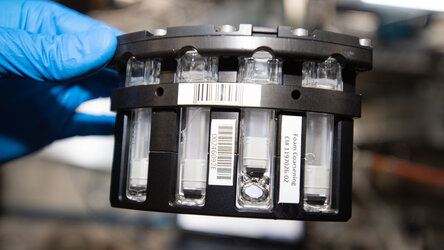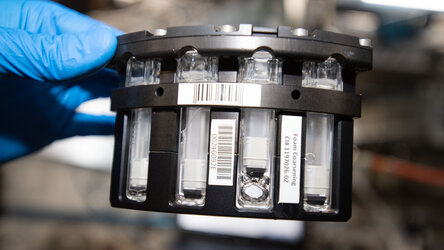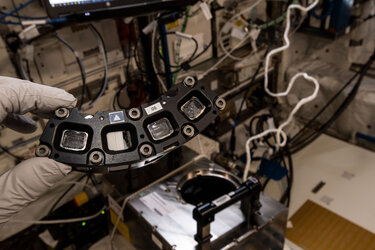Accept all cookies Accept only essential cookies See our Cookie Notice

About ESA
The European Space Agency (ESA) is Europe’s gateway to space. Its mission is to shape the development of Europe’s space capability and ensure that investment in space continues to deliver benefits to the citizens of Europe and the world.
Highlights
ESA - United space in Europe
This is ESA ESA facts Member States & Cooperating States Funding Director General Top management For Member State Delegations European vision European Space Policy ESA & EU Space Councils Responsibility & Sustainability Annual Report Calendar of meetings Corporate newsEstablishments & sites
ESA Headquarters ESA ESTEC ESA ESOC ESA ESRIN ESA EAC ESA ESAC Europe's Spaceport ESA ESEC ESA ECSAT Brussels Office Washington OfficeWorking with ESA
Business with ESA ESA Commercialisation Gateway Law at ESA Careers Cyber resilience at ESA IT at ESA Newsroom Partnerships Merchandising Licence Education Open Space Innovation Platform Integrity and Reporting Administrative Tribunal Health and SafetyMore about ESA
History ESA Historical Archives Exhibitions Publications Art & Culture ESA Merchandise Kids Diversity ESA Brand CentreLatest
Space in Member States
Find out more about space activities in our 23 Member States, and understand how ESA works together with their national agencies, institutions and organisations.
Science & Exploration
Exploring our Solar System and unlocking the secrets of the Universe
Go to topicAstronauts
Missions
Juice Euclid Webb Solar Orbiter BepiColombo Gaia ExoMars Cheops Exoplanet missions More missionsActivities
International Space Station Orion service module Gateway Concordia Caves & Pangaea BenefitsLatest
Space Safety
Protecting life and infrastructure on Earth and in orbit
Go to topicAsteroids
Asteroids and Planetary Defence Asteroid danger explained Flyeye telescope: asteroid detection Hera mission: asteroid deflection Near-Earth Object Coordination CentreSpace junk
About space debris Space debris by the numbers Space Environment Report In space refuelling, refurbishing and removingSafety from space
Clean Space ecodesign Zero Debris Technologies Space for Earth Supporting Sustainable DevelopmentLatest
Applications
Using space to benefit citizens and meet future challenges on Earth
Go to topicObserving the Earth
Observing the Earth Future EO Copernicus Meteorology Space for our climate Satellite missionsCommercialisation
ESA Commercialisation Gateway Open Space Innovation Platform Business Incubation ESA Space SolutionsLatest
Enabling & Support
Making space accessible and developing the technologies for the future
Go to topicBuilding missions
Space Engineering and Technology Test centre Laboratories Concurrent Design Facility Preparing for the future Shaping the Future Discovery and Preparation Advanced Concepts TeamSpace transportation
Space Transportation Ariane Vega Space Rider Future space transportation Boost! Europe's Spaceport Launches from Europe's Spaceport from 2012Latest

Foam, of coarse
Thank you for liking
You have already liked this page, you can only like it once!
The Foam-Coarsening experiment ran a new batch of cartridges in the Fluid Sciences Laboratory of the European Columbus module.
The experiment began in April to study foams in depth under the more stable conditions afforded by microgravity on the International Space Station.
The cell cartridges contain a mixture of soap and water. Bubbles are generated by moving a piston at high speed. The foam is observed for up to 100 hours, during which the foam bubbles become larger but less in number. This process slows down over time so measurements are stopped when five bubbles are formed in each cell section. The results are analysed with laser optics and high-resolution cameras.
The new batch contains the same water and soap mixture but with a difference in the amount of liquid in the cell. Producing foams in a different concentration allows researchers to study how the bubbles enlarge (or coarsen).
What is so special about foam? Besides appearing in your food and drink, foams are also found in sealing products, cosmetics and personal hygiene products, and even construction. They are lighter, offer better insulation and can be just as strong as compact materials.
Observing foams on Earth is tricky because the mixture of gas and liquid that makes up a foam quickly starts to change. Gravity pulls the liquid between the bubbles downwards, and the small bubbles shrink while the larger ones tend to grow at the expense of others. Due to drainage, coarsening (or enlarging) and rupture of the bubbles, a foam starts to collapse back to a liquid state.
But in space foams are more stable because the liquid does not drain in weightlessness. This allows scientists to study the phenomena of a bubble slowly becoming bigger and bursting, which on Earth are masked by the drainage that destabilises the foam.
Deeper insights into the behaviour of foams makes for better applications of its use on Earth. Besides improving food production, foams can also be metallic and have incredible structural characteristics. Aluminium foam, for example, is as strong as pure metal but much lighter. This research can help in the construction of light-weight and sturdy aerospace structures and new shielding systems for diagnostic radiology equipment in hospitals.
Read more about the life of a foam and the lessons learned from research so far.
The Foam-Coarsening experiment was developed by Airbus for ESA. The experiment is controlled and data collected by the Belgian User Operations Centre in Brussels, Belgium.
-
CREDIT
NASA -
LICENCE
ESA Standard Licence

Foam-Coarsening experiment

Chris holding Foam-Coarsening samples

Foam-Coarsening in space

Foam-Coarsening experiment















 Germany
Germany
 Austria
Austria
 Belgium
Belgium
 Denmark
Denmark
 Spain
Spain
 Estonia
Estonia
 Finland
Finland
 France
France
 Greece
Greece
 Hungary
Hungary
 Ireland
Ireland
 Italy
Italy
 Luxembourg
Luxembourg
 Norway
Norway
 The Netherlands
The Netherlands
 Poland
Poland
 Portugal
Portugal
 Czechia
Czechia
 Romania
Romania
 United Kingdom
United Kingdom
 Slovenia
Slovenia
 Sweden
Sweden
 Switzerland
Switzerland

























